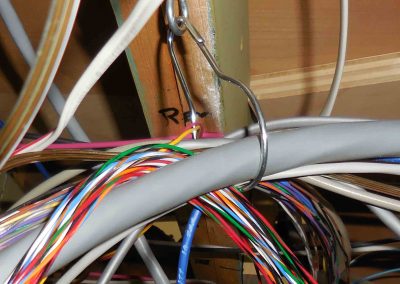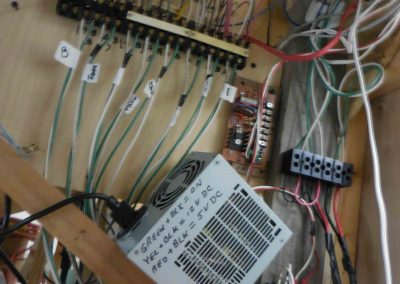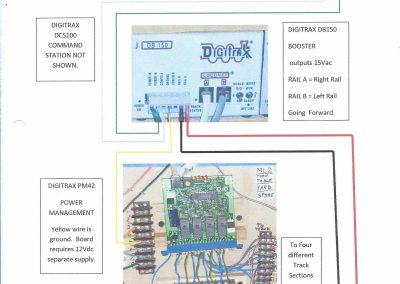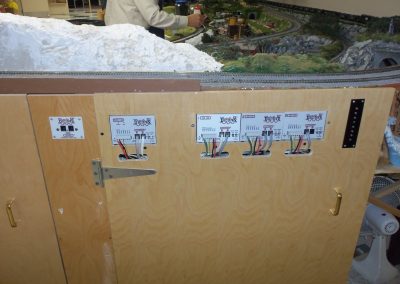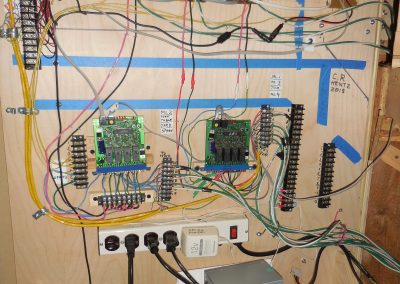HO Wiring and Power Distribution
by Charles R. Hentz
Since each locomotive needs about one half ampere of current, you will need five amp. supply to run ten locomotives. We have a Digitrax PS2012 Regulated Power Supply that can output 20 amperes. Each of our three Digitax DB 150 Boosters can handle five amperes of current. Since our layout is large, we would suffer a complete shut down if one locomotive derailed. That is why we have divided our layout into eight sections using Digitrax PM42 Power Management. A derailment only affects that section while trains continue to run in the other sections.
We mount all our equipment on a plywood door so that it can be spread out , organized and can be accessible without interfering with the underside of the layout. When a short circuit occurs, one of the leds on the outside of the door will not be on or blink as the PM42 tries to restore power. Each of these are labeled so we know where to look for the short. Most of the time it is a train that is on a turnout that is not thrown in the correct direction.

